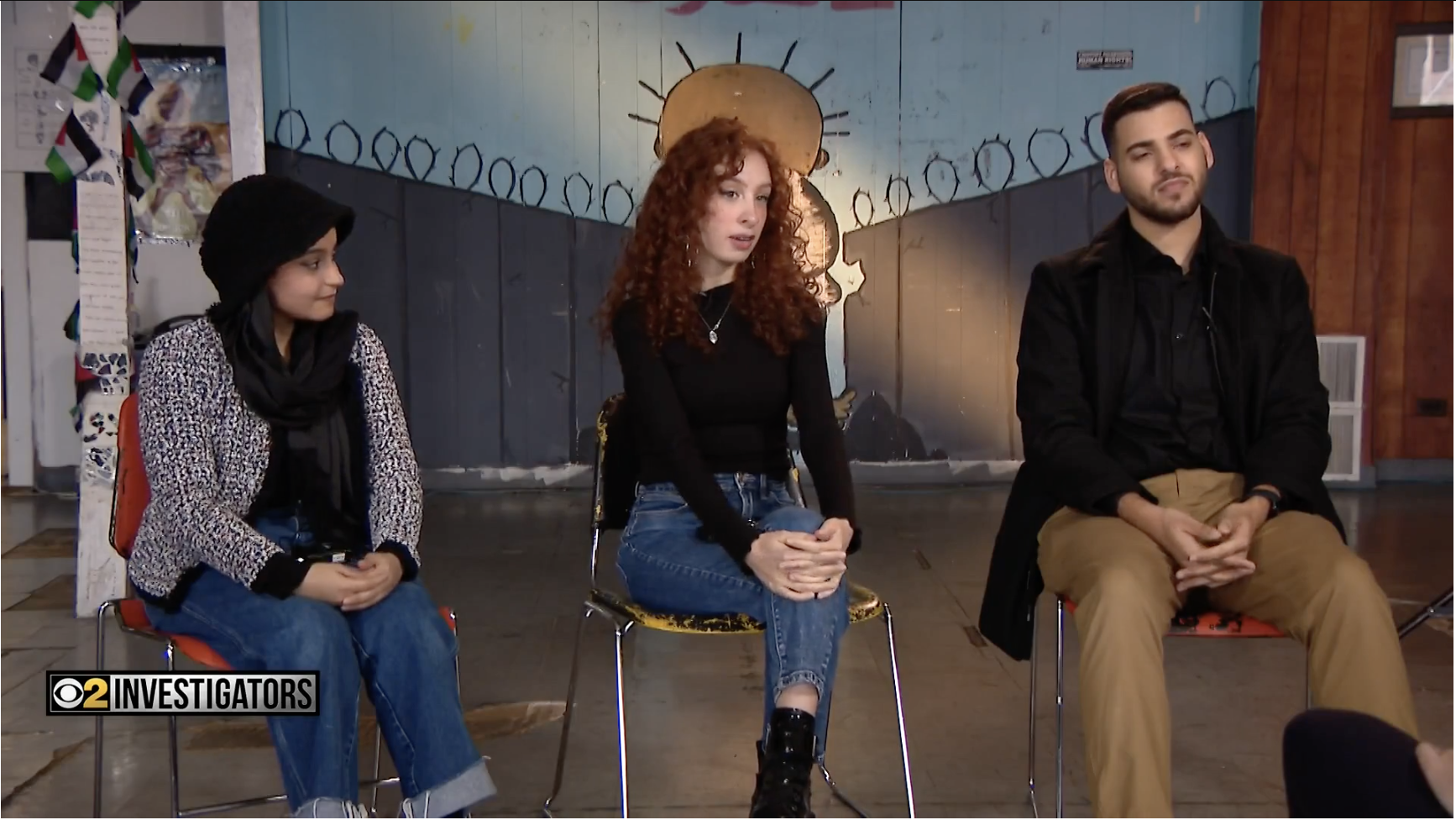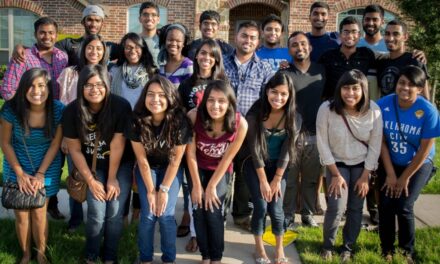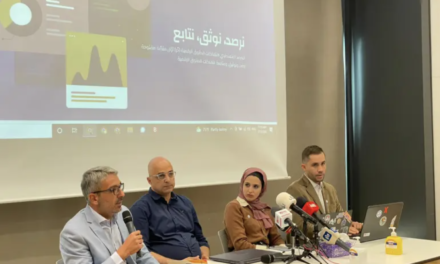BRIDGEVIEW, Ill. (CBS) — Imagine this: a 16-year-old student in Orland Park walks into his guidance counselor’s office. He has anxiety about the war in Syria, where his grandparents live.
Rather than address the teen’s anxiety, the counselor and school resource officer report him to law enforcement, claiming his family members were political Islamists.
He’s not the only one. A woman taking photos on the street. A man texting on his phone. Contract workers surveying a cell tower. These are seemingly everyday activities – snapshots of life across Chicagoland. And many people are being reported to police for doing them.
That’s the crux of a new report published Thursday by the Arab American Action Network (AAAN) and the Policing in Chicago Research Group at University of Illinois Chicago (UIC).
For the first time, they say their research shows strong evidence a federal government program that encourages reporting “suspicious” behavior is disproportionately targeting and racially profiling Arab and Muslim Americans for seemingly everyday activities like these.
AAAN’s findings – exclusively obtained by CBS 2 Investigators – confirm what many have suspected for decades: being suspicious has less to do with what a person is doing, and more to do with what they look like.
“It’s like hard proof,” said Nadiah Alyafai, a member of the AAAN. “That we’re not just making this up, that this is actually happening.”
Read the full report here at AAAN’s website, or below
‘A tool of racial profiling’
In the decades leading up to and after the 9/11 terror attacks, the group’s organizers heard community stories of suspected police surveillance and racial profiling. In 2012, AAAN conducted a community survey that showed most respondents had negative experiences with local and federal law enforcement.
“It almost seems like second nature, where everyone has a story, or they know someone who has been visited by the FBI, or they had a problem with immigration, or they had a problem with border patrol entry at an airport,” said Muhammad Sankari, lead organizer for AAAN. “And it’s all of this anecdotal evidence of, my uncle, my cousin, my neighbor.”
AAAN, a nonprofit which provides social services and organizes social justice efforts, thought the anecdotal information was a solid starting point to identify the scope of the problem, but they didn’t have firm data.
Years later, Sankari said the group stumbled on something in their research they’d never heard about before: suspicious activity reports (SARs).
SARs are produced as part of a federal program called the Nationwide Suspicious Activity Reporting Initiative. Administered by the U.S. Department of Homeland Security (DHS) and the FBI, the program was among many formed in the years after the 9/11 terror attacks. The suspicious activity reporting specifically was cited as necessary to thwart any future threats. An annual $2 million was earmarked to the program in 2007 when it was created, according to minutes from DHS committee hearings.
The government asks the public to report activity they deem to be “suspicious” or threatening to local police agencies, the website says.
Information on threats, including any SARs that are made, are received and analyzed by state-owned and operated facilities called fusion centers. These entities serve as focal points in states and major urban areas to gather, analyze and share this information. Illinois has two fusion centers: the Chicago Police Department and the Illinois State Police (ISP).
Sankari’s research about SARs led AAAN to file a Freedom of Information Act request with ISP in 2018, asking for copies of the reports. The ISP denied the request, citing a national security exemption, Sankari said.
“Especially in the heightened national security world, post 9/11, everything has been, no no no, it’s a matter of national security, it’s a matter of terrorism,” Sankari said. “And so, stonewall after being stonewalled, repeatedly.”
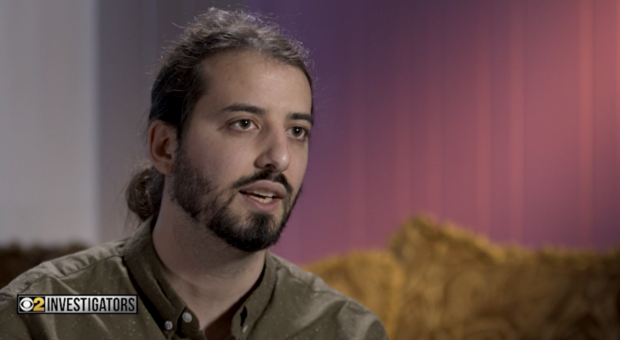
Muhammad Sankari, lead organizer with AAAN
The organization successfully sued ISP in 2019, and the agency was forced to turn over the reports. AAAN ultimately obtained a total of 235 SARs made between 2016 and 2019 – from both ISP and CPD.
With the help of AAAN members Alyafai, Majid Matariyeh, Reema Rustom – all students at the time – the team painstakingly sifted through the reports. That’s when they discovered a disturbing pattern: more than half of those who were reported for being suspicious were described as “Arab”,” “Middle Eastern,” “Muslim,” or “olive skinned” – even though Arabs make up just over 1 percent of the state’s population.
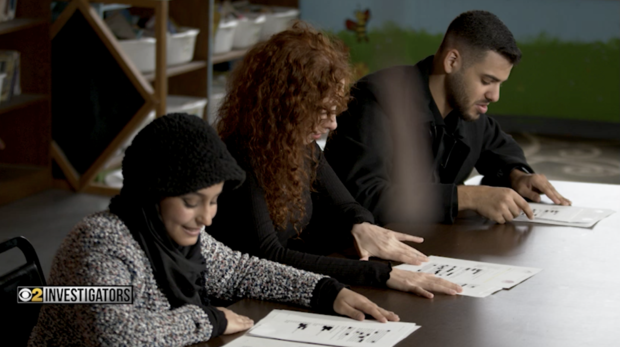
AAAN members Nadiah Alyafai, Reema Rustom, Majid Matariyeh (left to right) going through SARs.
In addition, about 70 percent of all reports identified people of color as suspects. That’s despite data from DHS and the FBI showing domestic extremists “advocating for the superiority of the white race” present the greatest threats of violence in the country.
“Without even digging into what these reports are being filed about, look at the huge disparity there,” Sankari said. “That in it of itself proves our point that this is a tool of racial profiling and surveillance.”
Alyafai said that’s a feeling she knows all too well as an Arab and Muslim American. Seeing the reports validated her experience.
“It’s almost like it was normalized through our community to have been targeted and harassed on a daily basis,” she said.
‘Criminalization of everyday activities’
Sankari said he expected to see a disparity in the subjects of the reports based on the anecdotal research he previously gathered in the community. But what alarmed him the most was what people were being reported for.
While SARs are supposed to document threats, many of them reported Arabs and Muslims for doing everyday activities – a perpetual source of anxiety that the community is always being watched.
In one example, a man reported a “suspicious male individual, possibly Middle Eastern” at the L Station across from Wrigley Field in 2016. The suspect “appeared out of place while taking various photographs” and was “typing or texting, possibly in Arabic,” the report said. A SAR was created on this incident.
In the 2019 incident at an Orland Park school, AAAN’s report said a 16-year-old student was reported to law enforcement after coming to a guidance counselor about his anxiety about the war in Syria.
“A counselor is supposed to create this safe, confidential space for a student to share personal things that are happening in their life,” Rustom said. “And the fact that these personal things were then reported to police was really sad and showed that we have to watch what we say constantly. Even to a doctor, a mental health professional, we have to watch what we say for fear of being reported to police for something so small, or for everyday activities.”
BY SAMAH ASSAD, MEGAN HICKEY
